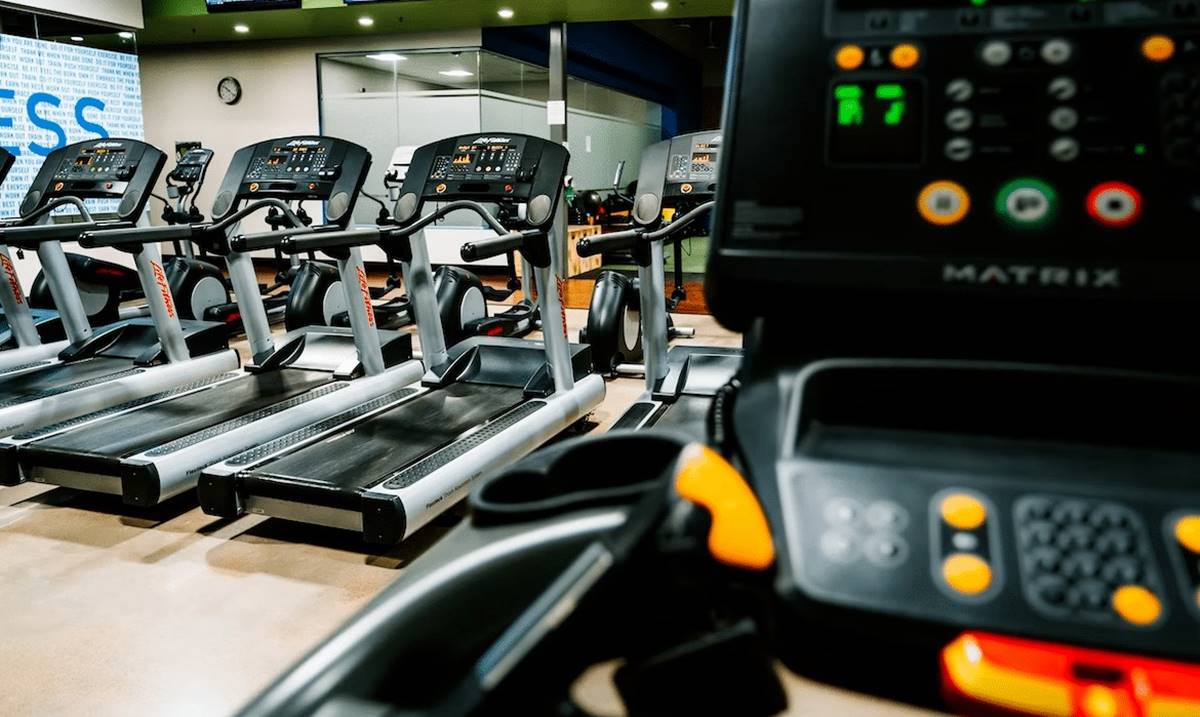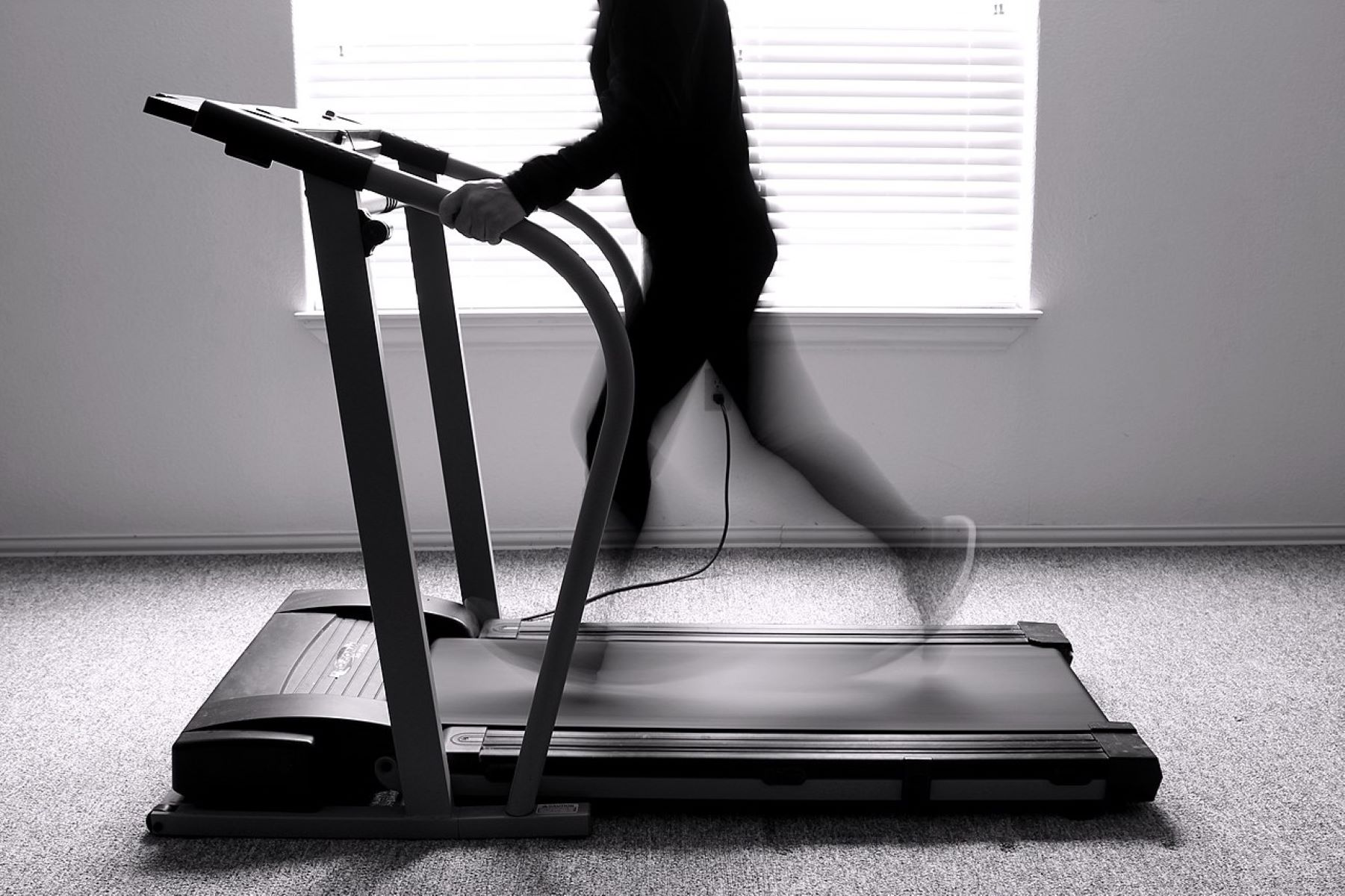Home>Misc>Featured>How Many Calories Do You Burn Jogging One Mile


Featured
How Many Calories Do You Burn Jogging One Mile
Modified: August 21, 2023
Discover how many calories can be burned while jogging one mile in this featured article. Plan your workouts and achieve your fitness goals.
Introduction
Welcome to the world of jogging, where each stride brings you closer to a healthier, fitter you. Jogging is not only a great cardiovascular exercise but also an effective way to burn calories. Whether you are a beginner or a seasoned runner, understanding the number of calories you burn while jogging can help you set realistic fitness goals and make informed choices about your workout routine.
Jogging is a simple and accessible form of exercise that can be enjoyed by people of all fitness levels. It can be done outdoors, in parks, on trails, or even on a treadmill if the weather does not permit outdoor activities. But have you ever wondered how many calories you actually burn when you jog a mile?
The number of calories burned while jogging depends on various factors, such as the speed and intensity of your run, your body weight and composition, and even the terrain you are running on. It’s important to understand these factors to get a better estimate of the calories burned, as it can vary significantly from person to person.
In this article, we will explore the different factors that affect the calories burned while jogging and how you can estimate the calories burned for your own workouts. So, whether you are a casual jogger aiming to shed a few extra pounds or a seasoned runner training for a marathon, let’s dive into the world of calories burned while jogging.
Factors Affecting Calories Burned
When it comes to calculating the number of calories burned during a jog, several factors come into play. Understanding these factors will give you a more accurate estimate of the calories you are burning. Let’s take a closer look at some of the key factors:
- Speed and Intensity of Jogging: The speed at which you jog and the intensity of your workout have a direct impact on the number of calories burned. Generally, the faster you run and the more effort you put into your jog, the more calories you will burn. Uphill or interval runs tend to burn more calories due to the increased intensity of the workout.
- Body Weight and Muscle Mass: Your body weight and muscle mass play a significant role in determining the calories burned while jogging. The more you weigh, the more energy it takes to move your body, resulting in a higher calorie burn. Additionally, individuals with more muscle mass tend to burn more calories at rest, as muscles require more energy to maintain.
- Terrain and Elevation: The type of terrain and the elevation of your jogging route can impact the number of calories burned. Running on a flat surface requires less effort compared to running uphill or on uneven terrain, which increases the intensity of the workout and therefore burns more calories.
These are just a few of the factors that influence the calories burned while jogging. It’s important to remember that everyone is unique, and these factors may affect individuals differently. To get a more accurate estimate of the calories you burn during your jog, consider using a fitness tracker or online calculator specifically designed for running.
In the next section, we will explore how you can estimate the number of calories burned during a jog, allowing you to track your progress and make adjustments to your workout routine as needed.
Speed and Intensity of Jogging
One of the key factors that affect the number of calories burned while jogging is the speed and intensity at which you run. The faster and more intense your jog, the more calories you will burn. Let’s delve into how speed and intensity impact calorie burn during jogging:
1. Speed: The speed at which you jog plays a significant role in determining the calories burned. When you increase your jogging speed, your body works harder, requiring more energy expenditure. This increased effort translates to a higher calorie burn. As a general rule, the faster you run, the more calories you will burn within the same distance.
2. Intensity: Intensity refers to how hard you are working during your jog. It takes into account factors such as your heart rate, breathing rate, and perceived exertion. Running at a higher intensity, such as incorporating intervals or sprints, boosts your calorie burn. Intense jogging not only increases the immediate calorie burn, but it also has an “afterburn effect.” This means that even after your run, your body continues to burn calories at an elevated rate to recover and restore homeostasis.
It’s important to find a balance between speed and intensity that works best for your fitness level and goals. Pushing yourself too hard without allowing for proper recovery can lead to overtraining and potential injuries. Gradually increasing your speed and intensity over time, coupled with adequate rest and recovery, can help maximize calorie burn while minimizing the risk of injuries.
Keep in mind that the calories burned during jogging can also be influenced by other factors such as body weight, muscle mass, and terrain. It’s essential to listen to your body, adjust your pace and intensity accordingly, and monitor your progress to ensure that you are meeting your fitness goals.
In the next section, we will explore how your body weight and muscle mass impact calorie burn during jogging, providing further insights into estimating your calorie expenditure.
Body Weight and Muscle Mass
When it comes to estimating the number of calories burned while jogging, your body weight and muscle mass play a significant role. Let’s take a closer look at how these factors impact calorie burn:
1. Body Weight: The calories burned during jogging are influenced by your body weight. The more you weigh, the more energy your body requires to move during physical activity. As a result, individuals with higher body weights tend to burn more calories while jogging compared to those with lower body weights. However, it’s important to note that weight loss cannot be solely attributed to jogging, as it requires a combination of healthy eating and overall physical activity.
2. Muscle Mass: Muscle is more metabolically active than fat, meaning it requires more energy to maintain. Therefore, individuals with higher muscle mass tend to have a higher basal metabolic rate and, consequently, burn more calories at rest. While jogging itself does not build significant muscle mass, including strength training exercises in your fitness routine can help increase muscle mass. This, in turn, can boost your overall calorie burn, even during jogging, as muscles require additional energy for their maintenance.
It’s important to note that body weight and muscle mass are just two factors among many that influence calorie burn during jogging. Other variables, such as the intensity of your workout and the terrain you’re running on, also impact the calories burned. Additionally, everyone’s body is unique, and individuals may respond differently to jogging. Therefore, it’s always a good idea to listen to your body, track your progress, and make adjustments to your workout routine as needed.
In the next section, we will explore how the terrain and elevation of your jogging route can affect the calories burned, giving you a more well-rounded understanding of calorie expenditure during jogging.
Terrain and Elevation
The terrain and elevation of your jogging route can have a significant impact on the number of calories burned during your workout. Let’s explore how different terrains and elevations affect calorie burn:
1. Flat Surface: Jogging on a flat surface requires less effort and energy compared to running on an incline or uneven terrain. While it may provide a less challenging workout, it still offers cardiovascular benefits and helps burn calories. If you’re a beginner or recovering from an injury, jogging on a flat surface can be a good starting point to build endurance and gradually increase your intensity.
2. Uphill Running: Running uphill requires more muscular effort and consumes additional energy, resulting in a higher calorie burn. The incline increases the intensity of the workout, engaging your leg muscles, core, and cardiovascular system to a greater extent. Uphill running can provide a more challenging workout that helps build strength and endurance while burning a significant amount of calories.
3. Downhill Running: While running downhill may seem easier and require less effort, it still contributes to calorie burn. However, the calorie burn is relatively lower compared to running on a flat surface or uphill. Downhill running places less strain on your muscles and typically results in a lower heart rate. Nonetheless, it still provides a valuable cardiovascular workout and can be incorporated into your running routine for variety.
4. Uneven Terrain: Jogging on uneven terrain, such as trails or off-road paths, introduces additional challenges and engages stabilizer muscles in your legs and core. This increased muscular effort requires more energy and consequently burns more calories. The constantly changing surface forces your body to adapt, making your workout more dynamic and enhancing calorie burn.
When planning your jogging route, consider incorporating different terrains and elevations to add variety and challenge to your workouts. This not only enhances calorie burn but also helps improve your balance, coordination, and agility. Remember to choose terrains that align with your fitness level and gradually progress as you become more comfortable and stronger.
In the next section, we will discuss how you can estimate the number of calories burned during jogging, helping you track your progress and achieve your fitness goals.
Estimating Calories Burned
Accurately estimating the number of calories burned during jogging can be challenging, as it depends on various factors that differ from person to person. However, there are a few methods you can use to get a rough estimate of your calorie expenditure. Let’s explore a few of these methods:
1. Online Calculators: There are many online calculators specifically designed to estimate the calories burned during jogging. These calculators take into account factors such as your body weight, running pace, and duration of the jog. While these calculators can give you a general idea, keep in mind that they are not highly accurate and may provide only an estimate.
2. Fitness Trackers: Using a fitness tracker, such as a smartwatch or activity tracker, can provide more accurate data on your calorie burn during jogging. These trackers use sensors and algorithms to analyze your heart rate, movement patterns, and other variables to estimate the calories burned. While fitness trackers can provide a more personalized estimate, it’s important to note that they are not 100% accurate and can vary in their measurements.
3. MET Values: Metabolic Equivalent of Task (MET) is a measure that represents the energy expenditure of various physical activities, including jogging. MET values can be used to calculate the calories burned based on the duration and intensity of your jog. For example, a MET value of 8.0 means you are burning 8 times the amount of energy compared to when you are at rest.
Keep in mind that these methods provide estimates and may not accurately capture your individual calorie burn. Factors such as body composition, genetics, and individual metabolism can influence your calorie expenditure. Additionally, the accuracy of the estimate depends on the accuracy of the data entered into the calculation, such as your body weight and running pace.
Tracking your jogging sessions and monitoring your progress over time can help you get a better understanding of your own calorie burn patterns. By comparing your calorie burn to your weight management goals or fitness targets, you can make adjustments to your workout routine as needed.
Remember, it’s essential to approach calorie burn estimates as a general guideline rather than an exact science. Focus on the consistency of your workouts, the intensity at which you are running, and the overall progress you are making towards your fitness goals.
In the next section, we will uncover some common mistakes people make when calculating calories burned during jogging, helping you avoid these pitfalls and ensure accurate estimations.
Common Mistakes in Calculating Calories Burned
When it comes to calculating the calories burned during jogging, there are common mistakes that people often make. Being aware of these mistakes can help you avoid pitfalls and ensure more accurate estimations of your calorie expenditure. Let’s explore some of these common mistakes:
1. Overestimating Calorie Burn: One of the most common mistakes is overestimating the calories burned during jogging. Online calculators and fitness trackers provide estimates based on generalized formulas and assumptions. However, these estimates may not apply to everyone due to variations in individual metabolism, body composition, and fitness levels. It’s important to approach the estimation as a rough guideline rather than an exact measurement.
2. Neglecting Resting Calories: Many people solely focus on the calories burned during their jogging session without considering the calories burned at rest. Even though jogging increases your calorie burn temporarily, your body continues to burn calories at rest to restore homeostasis and recover from the workout. Neglecting the resting calories can lead to an inaccurate understanding of the overall energy expenditure.
3. Ignoring Individual Differences: Each person is unique, and factors such as body weight, muscle mass, and fitness level vary from individual to individual. Calculators and general formulas may not take these individual differences into account. It’s important to recognize that the calorie burn during jogging can vary widely based on these personal factors.
4. Using Average Values: Online calculators often provide average values for calorie burn based on average speeds and body weights. However, everyone’s jogging pace and body weight differ. Using average values can lead to inaccurate estimations. It’s best to input your specific details, including your own jogging pace and body weight, to get a more personalized estimation.
5. Forgetting to Adjust for Intervals: If you incorporate interval training in your jogging routine, where you alternate between high-intensity bursts and recovery periods, the calorie burn can be different during those intervals compared to steady-state jogging. Forgetting to account for these intervals can lead to an underestimation of calorie burn if only the average jogging pace is considered.
While it is challenging to achieve 100% accuracy in calculating the calories burned during jogging, being mindful of these common mistakes can help you obtain a more realistic estimation. Instead of solely relying on calorie burn numbers, focus on the overall consistency of your workouts, progression in intensity, and your body’s response to the jogging routine.
In the next section, we will wrap up our discussion and provide some final thoughts about the calories burned while jogging.
Conclusion
Jogging is an excellent form of exercise that not only improves cardiovascular fitness but also helps burn calories. While estimating the exact number of calories burned during jogging can be challenging, understanding the factors that influence calorie expenditure can provide valuable insights.
Factors such as speed and intensity of jogging, body weight and muscle mass, and the terrain and elevation of your running route all play a role in determining the calories burned. However, it’s important to remember that these factors vary from person to person, and individual differences can affect calorie burn significantly.
Estimating calories burned can be done using online calculators, fitness trackers, or by considering MET values. While these methods provide estimates, they are not foolproof and should be used as rough guidelines rather than precise measurements.
Avoiding common mistakes, such as overestimating calorie burn, neglecting resting calories, and ignoring individual differences, can help ensure more accurate estimations. Additionally, being aware of the impact of interval training and adjusting calculations accordingly is crucial for a more precise estimation.
Ultimately, focus on the consistency of your jogging routine, listen to your body, and monitor your progress. Use calorie burn estimates as a tool to track your workouts and set realistic fitness goals. Remember that jogging is not only about burning calories but also about enjoying the physical and mental benefits of this wonderful exercise.
Now that you have a better understanding of the factors affecting calories burned while jogging, go out and hit the road or the trails. Embrace the joy of jogging, improve your fitness level, and know that each mile brings you one step closer to a healthier and happier you.








